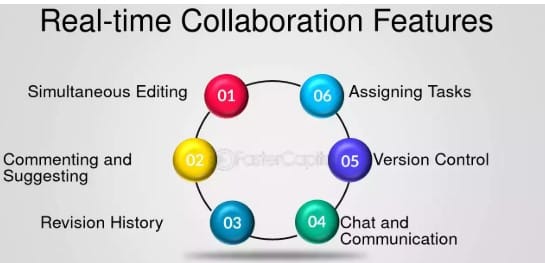Free Tools to Make and Sell eBooks for Students 2026
Introduction: Why eBooks Are the Perfect Side Hustle for Students
In 2026, creating and selling eBooks has become one of the easiest and most rewarding side hustles for students. Thanks to the rise of free tools to make eBooks, accessible eBook creation tools for students, and online marketplaces, students can now launch digital products without large budgets, advanced technical skills, or years of experience. Platforms like sociallif.com also provide guidance and tips specifically for student creators looking to monetize their knowledge.
Here’s why eBooks are an ideal choice for students:
Low Entry Barrier
All you need is a laptop, smartphone, internet connection, and a topic you’re passionate about. You don’t need expensive equipment, publishing deals, or paid courses to get started.
Global Reach
With digital publishing, your eBook can reach readers worldwide. Whether in the US, UK, India, or elsewhere, your work is available to anyone with an internet connection, giving you unlimited exposure.
Scalable Income
Unlike physical products, eBooks don’t run out of stock. You create your content once, and it can sell unlimited copies on multiple platforms. This scalability turns your eBook into a reliable source of passive income.
Flexible Schedule
Student life is unpredictable. eBook creation tools for students allow you to work at your own pace—early mornings, late nights, or weekends—without disrupting your studies.
Skill Development
Publishing an eBook helps you develop highly valuable skills:
Writing & Communication: Learn to present ideas clearly and effectively.
Design Skills: Use free tools to make eBooks with professional-looking covers and layouts.
Marketing & Business: Promote your work on the best platforms to sell eBooks for students and build entrepreneurial skills.
These skills are transferable and will benefit your career or future projects long after graduation.
Why 2026 Is the Perfect Time to Start
The demand for eBooks continues to grow. Readers prefer instant downloads, portability, and affordability, creating a huge market for student authors.
Bigger Audience: Millions of readers search online for guides, stories, and resources—your eBook could be exactly what they need.
AI-Powered Tools: Free design and writing tools, along with AI assistants, make the creation process faster, easier, and more professional.
Zero-Investment Opportunities: What once required hundreds of dollars can now be done for free, using free tools to make eBooks and student-friendly selling platforms like sociallif.com.
By starting now, you can transform your knowledge, creativity, or personal experiences into a digital asset that earns money, builds your skills, and grows your personal brand.
Step-by-Step Process to Create and Sell eBooks
Creating and selling eBooks in 2026 has never been easier, thanks to free tools to make eBooks, accessible eBook creation tools for students, and student-friendly platforms. Follow this step-by-step process to turn your ideas into a digital product that can generate income:
1. Pick Your Topic
2. Research & Outline Content
3. Write & Design Using Free Tools
4. Export Your eBook
5. Upload to Selling Platforms
6. Market Your eBook

Top Free Tools for eBook Creation
Creating an eBook may feel overwhelming at first, but with the right free tools to make eBooks and eBook creation tools for students, the process becomes simple and manageable. Below is a detailed guide to the top platforms students can use to write, design, and format professional-looking eBooks.
1. Canva – Design Professional eBooks Without Graphic Skills
Best For: Students who want visually appealing eBooks quickly without learning complex design software.
Why Canva Works:
Canva provides thousands of ready-to-use templates and a drag-and-drop editor, making it one of the most popular eBook creation tools for students. You can design attractive eBook covers, page layouts, and promotional graphics even if you have zero prior design experience.
How to Use Canva:
Sign up for a free account at Canva.com.
Search for “eBook templates” in the template library.
Customize fonts, colors, images, and layouts to match your eBook’s theme.
Paste your written content into the template pages.
Export your eBook as a PDF for direct sales or ePub for eReaders.
Pros:
Thousands of free templates and graphics
Beginner-friendly drag-and-drop editor
Accessible on both desktop and mobile devices
Cons:
Some premium graphics and templates require payment
Internet connection is needed to edit and save your designs
Real-Life Example:
Ali, a commerce student, used Canva to design a 20-page finance tips eBook. Despite having no prior design experience, he created an attractive layout, exported it as a PDF, and sold it on one of the best platforms to sell eBooks for students, Gumroad. Within the first week, Ali earned $50, proving that free tools to make eBooks can help students generate income quickly.
Tip for Students:
For a step-by-step guide on combining design, writing, and selling strategies for maximum results, check out sociallif.com, which provides detailed tutorials specifically for student eBook creators.

2. Google Docs – Simple & Effective Writing Tool for Students
Best For: Students who want a distraction-free writing environment and collaborative editing options.
Why Google Docs Works:
Google Docs is a cloud-based, free platform that automatically saves your work, making it one of the most reliable eBook creation tools for students. It’s ideal for drafting content, co-authoring with friends, and organizing ideas before moving on to design and formatting.
How to Use Google Docs:
Go to Google Docs online and log in using your Google account.
Create a new document and begin writing your eBook content.
Use headings, bullet points, tables, and images to structure your chapters.
Proofread with built-in spelling and grammar tools.
Export your eBook as a PDF (File → Download → PDF Document) to make it ready for publishing on the best platforms to sell eBooks for students.
Pros:
Completely free to use
Accessible on any device with internet
Real-time collaboration makes co-authoring simple
Cons:
Limited design features, better for text-heavy eBooks
Additional formatting may be needed for professional layouts
Pro Tip:
Write your first draft in Google Docs and then import it into Canva, one of the top free tools to make eBooks, to add visually appealing designs and create a polished final product.
For detailed tutorials and tips on combining writing and design tools, visit sociallif.com, a resource hub for student eBook creators looking to maximize their impact and sales.
 Tool for Students
Tool for Students
Best Websites to Sell Digital Products in 2026
3. Reedsy Book Editor – Professional eBook Formatting Made Easy
Best For: Students who want a polished, professional eBook format ready for self-publishing platforms like Amazon KDP.
Why Reedsy Works:
Reedsy is one of the top eBook creation tools for students, designed to automate formatting and ensure your eBook meets industry standards. By handling technical details such as chapter breaks, headings, and export formats, Reedsy saves time and helps your eBook look professional, increasing its appeal on the best platforms to sell eBooks for students.
How to Use Reedsy:
Sign up for a free account at Reedsy.com.
Create a new project and select whether your eBook is fiction or non-fiction.
Write directly in Reedsy or import your draft from Google Docs.
Apply formatting elements such as chapter headings, images, and page breaks.
Export your eBook in PDF, ePub, or MOBI formats—ready for platforms like Amazon KDP, Gumroad, or Payhip.
Pros:
Professional-grade formatting without extra effort
eBook is ready for multiple self-publishing platforms
Completely free to use
Cons:
Limited options for custom design and visuals
Slight learning curve for first-time users
Pro Tip:
If you want your eBook to stand out on the best platforms to sell eBooks for students, use Reedsy for formatting after drafting in Google Docs and designing visuals with Canva, combining the best free tools to make eBooks.
For step-by-step tutorials, templates, and tips on selling eBooks effectively, visit sociallif.com, a dedicated resource for students learning how to create and monetize digital books.

Top Free Platforms to Sell eBooks
Once your eBook is ready, the next step is finding the best platforms to sell eBooks for students. Using student-friendly, zero-investment platforms ensures your eBook reaches the right audience while keeping costs low. Here are the top options:
1. Gumroad – Simple and Beginner-Friendly
Why It’s Great:
Gumroad is perfect for students who want to start selling immediately. Upload your eBook, set a price, and start earning without complex setups.
How to Sell:
Sign up for a free account at Gumroad.com.
Click “Add Product” and select “Digital Product.”
Upload your PDF or ePub file created with free tools to make eBooks.
Set your price and product details.
Share your unique Gumroad link with friends, classmates, and social media followers.
Pros:
No monthly fee
Beginner-friendly interface
Accepts payments globally
Cons:
Small transaction fee per sale
2. Payhip – Selling Plus Marketing Tools
Why It’s Great:
Payhip is ideal for students looking for built-in marketing features. It supports discount codes, affiliate programs, and promotional campaigns, making it one of the top eBook creation tools for students to monetize their work effectively.
How to Sell:
Create a free account at Payhip.com.
Upload your eBook in PDF or ePub format.
Set the price and customize your sales page.
Promote your eBook via social media, blogs, or email lists.
Pros:
Unlimited product uploads
Built-in marketing and affiliate tools
Easy for beginners
Cons:
Transaction fee per sale
3. Amazon Kindle Direct Publishing (KDP) – Maximum Global Reach
Why It’s Great:
KDP allows your eBook to reach millions of readers worldwide. It’s one of the best platforms to sell eBooks for students who want exposure on a global scale.
How to Publish:
Sign up for free at kdp.amazon.com.
Upload your eBook in ePub or MOBI format.
Add a title, description, keywords, and set your price.
Submit your eBook for review (approval typically in 24–72 hours).
Pros:
Access to a massive global audience
Option to sell both eBooks and paperbacks
Free to publish
Cons:
Highly competitive marketplace
Requires marketing to stand out
Comparison Table of Tools & Platforms
| Tool/Platform | Best For | Pros | Cons | Ideal User |
|---|---|---|---|---|
| Canva | Design | Templates, drag-and-drop | Limited free images | Creative students |
| Google Docs | Writing | Free, collaborative | Basic design | Writers |
| Reedsy | Formatting | Professional layouts | Limited themes | Authors |
| Gumroad | Selling | Easy setup | Small fee | Beginners |
| Payhip | Selling + Marketing | Affiliate support | Fee per sale | Marketers |
| Amazon KDP | Selling globally | Huge audience | Competitive | Serious sellers |
Monetization Strategies for Students
Turning your eBook into a consistent income stream requires smart strategies. Here are the most effective approaches for students using free tools to make eBooks and publishing on the best platforms to sell eBooks for students:
Sell on Multiple Platforms
List your eBook on Gumroad, Payhip, Amazon KDP, or other student-friendly marketplaces to maximize reach and sales potential.Offer a Free Sample & Upsell the Full Version
Provide readers with a free preview or first chapter. Once they see the value, encourage them to purchase the complete eBook.Create a Series of Short eBooks
Instead of one long eBook, consider producing a series. This keeps your audience engaged and allows for recurring sales.Bundle eBooks with Worksheets or Templates
Add value by including downloadable resources, study guides, or interactive templates. Bundles can justify higher pricing and attract more buyers.Use Social Media for Promotion
Build anticipation before your eBook launch by posting snippets, behind-the-scenes content, and teaser graphics on Instagram, TikTok, or Facebook.
Real-Life Examples of Student Success
Sarah: An English literature student used Canva (one of the best free tools to make eBooks) and Gumroad to sell short poetry books, earning consistent side income.
Ahmed: A medical student wrote a “First-Year Anatomy Guide” and published it on Amazon KDP, reaching a global audience.
Fatima: A business student created a budgeting guide series, marketed it via Instagram, and earned around $300 per month.
Common Mistakes to Avoid
Using copyrighted images or content without permission.
Setting prices too high before establishing an audience.
Skipping proofreading and editing, which can hurt credibility.
Failing to promote the eBook after publishing.
Ignoring professional formatting standards required by top platforms like Amazon KDP.
Pro Tip for Students:
Combine the best eBook creation tools for students with these strategies and real-world examples to maximize success. For detailed tutorials, marketing tips, and step-by-step guides, visit sociallif.com, a dedicated hub for student eBook creators.
Bonus Tips for Student eBook Success
Creating an eBook is just the first step—promotion and strategy make the difference. Here are some actionable tips to help students succeed using free tools to make eBooks and publish on the best platforms to sell eBooks for students:
Build a Social Media Presence
Create an Instagram or TikTok page dedicated to your eBook brand. Share sneak peeks, tips, and behind-the-scenes content to engage readers before launch.Leverage AI Tools for Idea Generation
Use AI platforms like ChatGPT to brainstorm topics, draft outlines, and generate ideas, then personalize them to match your voice.Offer Freebies to Grow Your Audience
Give away free chapters, templates, or worksheets to collect emails and build a loyal audience.Collect Feedback
Ask readers for reviews and suggestions to improve future editions or create sequels.Schedule Consistent Promotion
Plan regular social media posts, email campaigns, and blog content to maintain visibility and encourage ongoing sales.Combine Tools for Maximum Efficiency
Use eBook creation tools for students like Google Docs, Canva, and Reedsy together to create professional-quality content with minimal effort. For detailed tutorials and strategies, visit sociallif.com.
Frequently Asked Questions
Q1: What is the best free tool for making eBooks?
A: Canva is perfect for beginner-friendly eBook templates and professional design.
Q2: Can I sell eBooks without a website?
A: Yes. Platforms like Gumroad, Payhip, and Amazon KDP allow sales without your own site.
Q3: Do I need to register a business to sell eBooks?
A: Usually, students can sell as individuals. Check your local regulations to be sure.
Q4: Which eBook format is best?
A: PDF works well for direct sales; ePub is ideal for Kindle and other eReaders.
Q5: Can AI help me write eBooks?
A: Yes, AI can assist with drafting and ideas, but always add your personal touch to make content engaging.
Q6: How much can students earn selling eBooks?
A: Beginners often earn $50–$100/month. Experienced students can scale to $1,000+ depending on niche and marketing.
Q7: Do I need to be a professional writer?
A: No. Clear, helpful content often sells better than complex writing.
Q8: Can I sell the same eBook on multiple platforms?
A: Yes. Cross-listing on Gumroad, Payhip, and Amazon KDP increases reach and sales potential.
Q9: How can I market my eBook for free?
A: Use social media, blogs, YouTube, and free previews to attract readers.
Q10: Which eBook topics sell best for students?
A: Popular niches include study guides, side hustles, personal development, DIY projects, fitness, and budgeting tips.
Q11: Do free tools limit the quality of my eBook?
A: Not at all. Tools like Canva, Google Docs, and Reedsy allow students to create professional-quality eBooks without spending a dime.
Q12: Can I update my eBook after publishing?
A: Yes, most platforms let you upload revised versions and send updates to your buyers for free.
Conclusion
Creating and selling eBooks in 2026 is an accessible, zero-investment side hustle for students. With free tools like Canva, Google Docs, Reedsy, and platforms like Gumroad, Payhip, and Amazon KDP, students can turn knowledge and creativity into passive income.
It’s more than making money—it’s about building skills, creating a digital asset, and sharing your ideas with the world. Start with one tool, one eBook, and watch your efforts grow into a sustainable online venture.
Which tool will you try first? Start today and create your first eBook!
💬So, which tool will you experiment with first? Share your thoughts in the comments!
Pingback: Best Start PLR Blog Without Writing Content 2026 - Sociallif.com